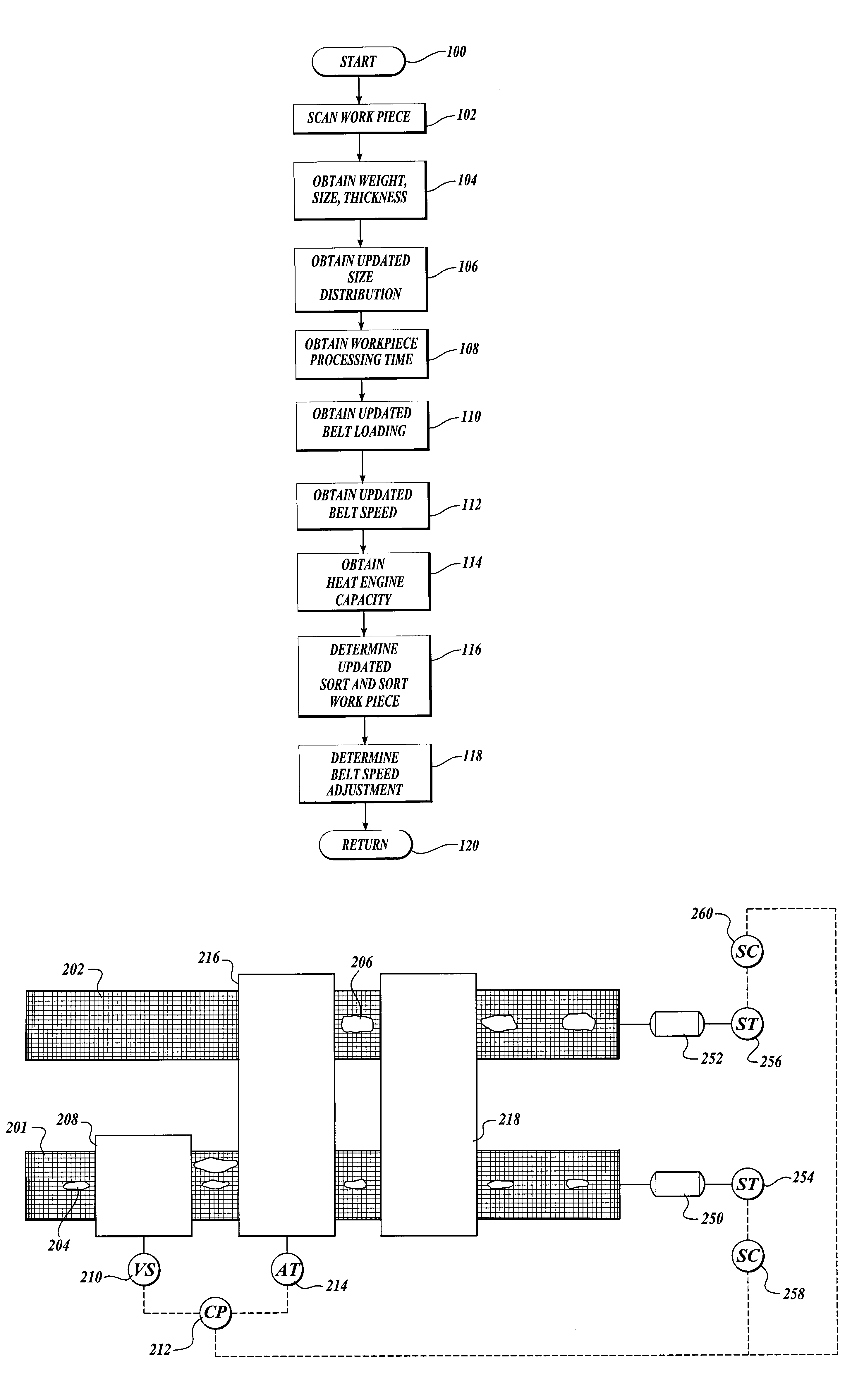Sorting system for multiple conveyor belts
a sorting system and conveyor belt technology, applied in the field of sorting system for multiple conveyor belts, can solve the problems of short-lived situation, ineffective operation, and inability to meet the initial sorting criteria, and achieve the effect of maintaining conveyor loading
- Summary
- Abstract
- Description
- Claims
- Application Information
AI Technical Summary
Benefits of technology
Problems solved by technology
Method used
Image
Examples
Embodiment Construction
[0026]A heat engine, whether a freezer, a chiller, an oven, or other apparatus, has an optimum processing capacity. The processing capacity is typically given as pounds per hour. The total product feed rate to the heat engine cannot exceed this rate, as the risk that product may be under processed is increased. Product may be moved continuously into and out of the heat engine with a conveyor at such speed that will adequately process the particular workpiece in question. Ideally, the workpiece should spend only as much time as is required to freeze, cook, or otherwise process the workpiece to the desired specifications within the acceptable tolerances. The conveyor speed is influenced by the heat transfer or other processing characteristics of the heat engine, physical parameters of the workpiece, for example, the size, shape, mass, thickness, and heat transfer or other relevant characteristics of the workpiece, along with perhaps many more attributes of greater or lesser importance...
PUM
 Login to View More
Login to View More Abstract
Description
Claims
Application Information
 Login to View More
Login to View More - R&D
- Intellectual Property
- Life Sciences
- Materials
- Tech Scout
- Unparalleled Data Quality
- Higher Quality Content
- 60% Fewer Hallucinations
Browse by: Latest US Patents, China's latest patents, Technical Efficacy Thesaurus, Application Domain, Technology Topic, Popular Technical Reports.
© 2025 PatSnap. All rights reserved.Legal|Privacy policy|Modern Slavery Act Transparency Statement|Sitemap|About US| Contact US: help@patsnap.com



